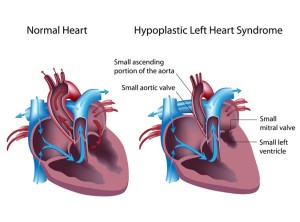In the Mechanical Engineering department at Embry-Riddle, a new track has opened up. The current tracks were Robotics, Clean Energy, and High Performance Vehicles. It is time to welcome a new track: Biomechanical/Medical Engineering! I am proud to say I am in that track! Since it is a new track here at Riddle, there is a lot to get involved in and learn from. Dr. Eduardo Divo heads the track and the program here at ERAU. The technical definition of Biomechanical Engineering (according to Wikipedia) is that it is “a bioengineering sub discipline, which applies principles of mechanical engineering to biological systems and stems from the scientific discipline of biomechanics. Topics of interest in the field include biomedical engineering and agricultural engineering.” Basically, it deals with a bunch of different aspects, in particular, fluids.
As all of you engineering students know here at Riddle the “gauntlet” is fluids, solids, and dynamics. Well, if you plan to be in the Biomechanical track, pay attention in fluids! Biomechanical has a range of topics it covers but one of the main ones it ties into includes biomedical. It deals with biology and medicine. Usually pertaining to the human body. For example, one of the projects biomechanical/medical engineering is working on here at  Riddle include the Hypoplastic Left Heart Syndrome. Hypoplastic Left Heart Syndrome, or HLHS, is “one of the most complex cardiac defects seen in the newborn and remains probably the most challenging to manage of all congenital heart defects. It is one of a
Riddle include the Hypoplastic Left Heart Syndrome. Hypoplastic Left Heart Syndrome, or HLHS, is “one of the most complex cardiac defects seen in the newborn and remains probably the most challenging to manage of all congenital heart defects. It is one of a
group of cardiac anomalies that can be grouped together under the description single ventricle defects” (Cincinnati Children’s). Basically, when babies are born with HLHS their whole left side of the heart is underdeveloped. Since the left side of the heart can’t effectively pump blood to the body, the right side of the heart has to pump blood both to the lungs and to the rest of the body. In order to fix this issue, the newborn must go through a series of 3 surgeries 6 months apart. The first surgery has to occur within 5 days of birth or else the baby will not survive. Now that you have a little bit of a background, we as engineers here at Riddle are trying to improve the second surgery in the series to make it more efficient. Partnering with UCF and Dr. William DeCampli, we are creating a new cardiovascular flow loop to help achieve maximum flow from the heart to the body. Through computational fluid dynamic and analysis models and lots of hard work, we hope that this new method can save little newborns lives all around the world.
I personally love working on this project and working with the computations and complications of this project. It is tough going through the process and hearing more no’s then yes’s but that is what us engineers do. We solve problems and build the future. That is what it is all about. If I can make someone’s life better through problem solving and engineering, I am happy.
If you would like to know more about Biomechanical/medical engineering, contact Dr. Eduardo Divo in the Mechanical Engineering department.


